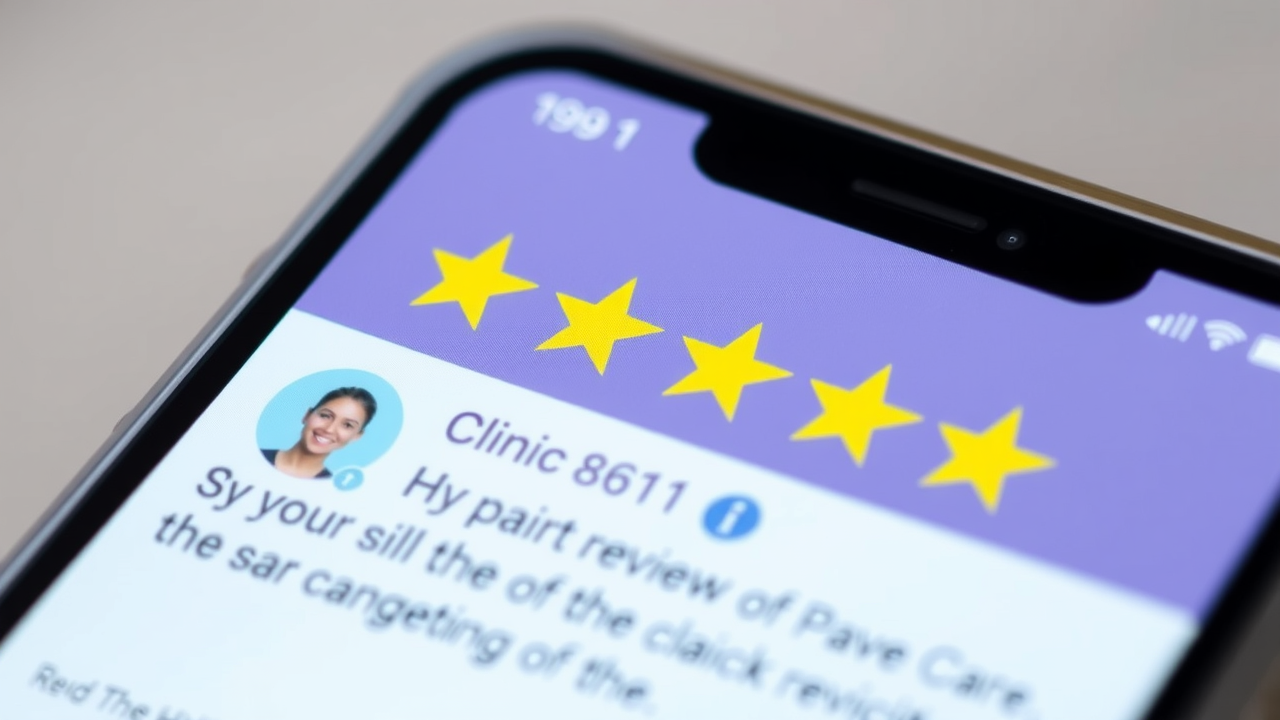
Did you know that 93% of patients say online reviews directly influence their decision when choosing a healthcare provider? In today’s digital-first world, a robust patient reviews strategy isn't just a nice-to-have—it's essential for driving practice growth, improving patient trust, and standing out in a crowded medical landscape.
This comprehensive guide will show you how to turn every patient review into fuel for reputation and growth, no matter your practice size.
Why a Strategic Patient Reviews Strategy Drives Medical Practice Growth
A well-crafted patient reviews strategy sits at the heart of a thriving medical practice. With today’s patients acting more like savvy consumers, they rely heavily on online reviews to make informed decisions about their healthcare provider. Not only do positive reviews foster patient trust and drive new appointments, but the absence of reviews—or worse, unmanaged negative reviews—can cost your practice dearly in lost opportunities. Modern patients want transparency, social proof, and assurance before they even call a clinic. Actively managing online reviews signals professionalism and dedication to patient satisfaction, helping your practice rise above competitors while improving both reputation and patient experience.
In fact, implementing a focused patient reviews strategy not only brings more patients through your doors, but it builds a feedback-driven culture where the patient voice truly matters. Practices that systematically request, monitor, and act on patient review content create a powerful loop of ongoing improvement and naturally generate the kind of positive experiences that enhance both star rating and community standing. Ultimately, online reviews have become the new digital handshake in healthcare—make yours count.

Understanding the Impact of Online Reviews on Patient Experience
The patient experience begins long before a person walks into your practice—it often starts online, as potential patients research local providers and scrutinize every review. Online reviews don’t just provide social proof; they are firsthand accounts that reveal what new patients can expect when they seek care. A single patient review that highlights a positive experience reinforces a provider’s trustworthiness, while even one negative review can raise red flags for those unfamiliar with your services.
Today’s healthcare decisions are shaped by what others share. Every detail, from wait times to provider bedside manner, appears as feedback on online review sites. Prospective patients look for patterns, consistency, and genuine provider responses, trusting collective experiences as much as medical credentials. By understanding this impact, you can consistently optimize every phase of the patient journey—ensuring higher satisfaction and better reviews.
Key Components of an Effective Patient Review Process
To build an effective patient reviews strategy, healthcare providers must focus on process. The strategy starts with making it as easy as possible for patients to share their experiences. Streamlined processes for soliciting and collecting reviews—such as direct links, in-office prompts, or automated follow-ups—are essential. Patients are more likely to leave reviews when asked promptly and given clear instructions on how, where, and why to provide feedback.
Beyond ease of collection, providers need a system in place to monitor, respond, and leverage every patient review. Consistently acknowledging positive experiences reinforces satisfaction, while professionally addressing any negative review demonstrates your practice’s commitment to improvement. Tracking review trends gives real-time insight into the patient journey and identifies both strengths and areas requiring attention. Ultimately, the goal is to convert every patient’s voice into a catalyst for better care and sustainable practice growth.

Selecting the Right Review Platforms for Your Medical Practice
Choosing the right review platform is essential for maximizing online visibility and ensuring your patient reviews reach the widest, most relevant audience. Google Business Profile dominates the search engine landscape, making it a non-negotiable platform for practices seeking top rankings and immediate credibility with patients. Healthgrades, RateMDs, and Vitals are purpose-built review platforms tailored to the healthcare industry, each offering unique audiences and review analytics that help elevate your online reputation.
Yelp and Facebook provide exceptionally broad reach and social media integration opportunities, allowing practices to capitalize on both search and social proof. By maintaining active, accurate listings across multiple review platforms, providers build a patient reviews strategy that captures feedback wherever new patients are searching. Consistency, monitoring, and regular updates across these sites set the stage for stronger patient trust and lasting community impact.
How to Optimize Profiles Across Multiple Review Platforms
To make the most of each review platform, ensure that your profiles are consistent and accurate everywhere your medical practice appears online. Start by standardizing the name, address, phone number (NAP), business hours, and key details across all platforms. Inaccurate listings create confusion and erode trust with both potential patients and search engines, so routine audits are essential.
Next, populate each platform with a concise yet informative practice description, a current list of services, and professional photographs of your team and facility. Highlighting awards or recognitions further distinguishes your practice. Don’t forget to regularly review and respond to patient feedback, as active communication signals engagement and improves online reputation. A well-optimized, up-to-date digital footprint on every key review site amplifies trust, visibility, and the overall effectiveness of your patient reviews strategy.
How to Ask for Patient Reviews & Increase Review Requests
When and how you ask for feedback can dramatically shape your patient reviews strategy. The best time to initiate a review request is when positive patient sentiment is the highest—immediately after a successful appointment or procedure, at the check-out desk or via promptly delivered follow-ups. In-person requests create a personal connection, increasing the likelihood that patients will leave a review then and there.
Digital methods, including follow-up emails and SMS messages containing a direct link to your chosen review platform, lower resistance and make it easier for patients to act. Including clear, simple printed instructions for older or less tech-savvy patients also ensures inclusivity. Regardless of the channel, make the request friendly, timely, and easy, positioning feedback as a valued contribution to the practice’s ongoing improvement.
Crafting Review Requests: Messaging Best Practices
The wording of your review request is critical in guiding patients to share their experiences online. Open with appreciation for their visit, then kindly invite them to share their honest feedback on a preferred review platform. For example: “Thank you for trusting us with your care today. If you found your visit helpful, would you be willing to share your experience on Google or Healthgrades?” Personalized requests, mentioning the specific service or provider, are proven to further boost the response rate.
Reassure patients that their voice matters and that feedback directly helps improve care for the entire community. Emphasize the simplicity (“It only takes a minute!”), and provide easy steps or a direct link so they can act without delay or confusion. Remember, well-crafted messaging demonstrates attentiveness and respect, strengthening the relationship with every patient who chooses to leave a review.
Managing Online Reputation: Handling Negative Reviews and Patient Feedback
No matter how exceptional your care, every medical practice will eventually receive a negative review. The key to preserving and building trust lies in a thoughtful, timely response that demonstrates accountability and a commitment to improving the patient experience. When responding, always be calm, professional, and empathetic. Thank the reviewer for their feedback, acknowledge concerns, and explain steps you’ll take to address their experience—without disclosing any private patient information.
Maintaining patient satisfaction is about showing genuine intent to resolve issues and learn from each unique interaction. A measured public response paired with a private offer to discuss and resolve the situation underscores your practice’s dedication to both transparency and continuous improvement. This approach not only reassures the reviewer but signals to every potential patient that their voice will be heard and respected, regardless of circumstance.
Turning Negative Reviews Into Opportunities for Practice Growth
A negative review doesn't have to spell disaster—in fact, it can open the door to practice growth when handled correctly. Diligently addressing complaints demonstrates that you listen and care about solutions, often transforming dissatisfied patients into your most loyal supporters. Start with a prompt, professional reply that invites the reviewer to connect privately and discuss their situation in detail.
After the issue is addressed, consider sharing (without violating privacy) the changes or improvements you've implemented in response to the feedback. This transparency showcases your willingness to evolve based on patient needs. Practices that consistently turn criticism into action earn stronger online reputation scores, attract more positive reviews, and build a resilient culture of continuous improvement.

Leveraging Positive Reviews to Build Social Proof and Patient Trust
Positive reviews do more than foster patient trust—they are a critical factor in local search engine ranking algorithms. Medical practices with higher star ratings and a steady flow of fresh reviews are more likely to appear in top search results, attracting more organic online traffic and establishing instant credibility with potential patients. Each positive review is a public endorsement, lending powerful social proof that eases new patient anxiety and expedites the decision-making process.
Practices that make it easy to leave a review and regularly prompt patients to share their experience see compounding benefits: better search engine visibility, higher click-through rates, and a growing online reputation that strengthens both new and returning patient trust. Making reputation management a routine part of your practice’s operations is strategic—and essential—for long-term competitive advantage.
Social Media Integration for Promoting Positive Patient Reviews
Amplify every patient’s voice by weaving positive reviews into your broader digital communication strategy. Social media platforms like Facebook and Instagram are perfect channels for sharing standout testimonials—be it in regular posts, Stories, or highlights. This approach not only celebrates your team but also expands the reach of social proof beyond traditional review sites.
Embedding positive reviews directly on your website increases dwell time, signals authenticity to potential patients, and improves conversion rates. Many review platforms offer widgets or APIs that display real-time ratings and feedback, giving new patients dozens of reasons to trust your care—before they even book an appointment. Proactive social media integration is a low-effort, high-impact way to harvest ongoing benefits from your patient reviews strategy.
Ensuring Compliance and Protecting Patient Privacy in Your Reviews Strategy
Every medical practice must navigate HIPAA and other privacy laws when implementing a patient reviews strategy. When responding to online reviews, never disclose any identifiable patient information, appointment details, or specifics of diagnoses and treatments. Even confirming that someone is indeed your patient can be a violation of privacy regulations.
The safest response acknowledges the feedback, expresses appreciation for the input, and encourages the reviewer to contact the practice directly to discuss any concerns further. It’s always best to prioritize discretion, minimize liability, and ensure every public communication—especially around sensitive feedback—aligns with regulatory standards. Training staff on HIPAA-compliant response protocols is an investment in trust and legal protection.
Best Practices for Maintaining Confidentiality and Patient Trust
Protecting patient confidentiality goes hand-in-hand with maintaining a positive online reputation. Every review response should avoid specifics—never confirm or deny whether the reviewer is a patient, and steer clear of mentioning treatment details. Instead, use general language such as “We value all feedback and strive to provide exceptional care to every patient.”
Whenever possible, move sensitive or complex discussions offline, providing a private email or direct phone number for follow-up. This approach protects privacy, diffuses public complaints, and demonstrates a commitment to ethical, patient-centered care. Diligence in these areas earns the trust of both current and future patients, strengthening your reputation from every angle.
Tracking Patient Reviews Strategy Success & Practice Growth Over Time
To ensure your patient reviews strategy delivers continuous results, integrate analytics into daily practice operations. Begin by tracking overall review volume, spotlighting trends over time and evaluating which review platforms perform best. Average star rating is a key snapshot for both patients and search engines, reflecting general satisfaction and highlighting areas for improvement.
Response rate measures your team’s timeliness and engagement, while content analysis—especially for keywords relating to service quality or named providers—provides actionable intelligence. These data points reveal strengths to build on and signal issues requiring rapid attention. By monitoring these core metrics, your practice evolves, remaining agile and competitive in the healthcare landscape.
Adapting Your Patient Reviews Strategy Based on Patient Feedback
Building an effective patient reviews strategy is not a one-time effort—it requires ongoing adaptation. As patient feedback reveals shifting needs and new challenges, regularly update your processes for requesting, responding to, and promoting reviews. Leverage technology to automate certain tasks, but always keep a human touch at the heart of patient communications.
Periodic staff training, new review platform features, and changing legal requirements also warrant frequent reviews and process adjustments. By nurturing a responsive, flexible mindset, you’ll keep your approach ahead of the competition, fostering sustainable growth and resilience for your medical practice.

Key Takeaways on Building a Winning Patient Reviews Strategy
Building a strong patient reviews strategy isn’t just about collecting positive feedback—it’s about creating a culture of trust, transparency, and continuous improvement. By actively engaging with reviews, both positive and negative, your practice can showcase its commitment to patient care, strengthen its online reputation, and stand out in an increasingly competitive healthcare landscape. Reviews provide valuable insights into what your patients appreciate most, while also highlighting areas that may need attention.
Now is the time to turn patient voices into your greatest growth tool. Whether it’s optimizing your review platforms, streamlining requests, or training staff on reputation management, each step you take enhances both patient trust and practice success. Start building your winning strategy today and unlock the power of patient feedback to drive new growth and long-lasting relationships.

Frequently Asked Questions on Patient Reviews Strategy
Why are patient reviews so important for medical practices?
Because 93% of patients say online reviews influence their choice of provider, reviews act as powerful social proof. Positive reviews attract new patients, while unmanaged negative reviews can damage trust and reduce appointments.
Which platforms should my practice focus on for patient reviews?
Google Business Profile is essential for visibility, while healthcare-specific sites like Healthgrades, RateMDs, and Vitals build credibility. Platforms like Yelp and Facebook expand reach and integrate with social media.
What’s the best way to ask patients for reviews?
The most effective time is right after a positive appointment experience. Practices can ask in person, send automated email/SMS follow-ups with direct links, or provide printed instructions for less tech-savvy patients.
How should we handle negative reviews?
Respond calmly and professionally, thank the patient for feedback, and invite them to continue the conversation privately. This shows accountability, protects privacy, and often turns criticism into an opportunity for improvement.
How can patient reviews improve overall practice growth?
Reviews boost search rankings, build trust, and provide actionable feedback for continuous improvement. By monitoring trends and engaging with patients online, practices create a feedback-driven culture that fuels long-term growth.
Discover the Competitive Advantage: Transform Your Medical Practice With a Comprehensive Patient Reviews Strategy
Ready to turn reviews into results? A strong patient reviews strategy not only builds trust and credibility but also positions your practice as the top choice in a competitive healthcare market. By proactively gathering, managing, and showcasing patient feedback, you create a powerful cycle of improved reputation, increased referrals, and higher patient retention. Don’t leave your growth to chance—start implementing a comprehensive reviews strategy today and secure a thriving, future-ready medical practice.
 Add Row
Add Row  Add
Add 




Write A Comment